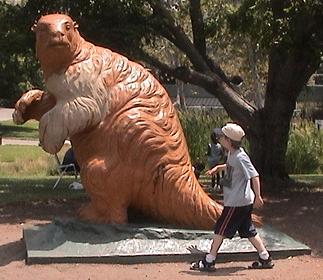
As far as parks go, people rarely ever describe them as unusual. When you think of parks, the first thing that would come to your mind would most likely be lush green surroundings with cute woodland creatures instead of bubbling asphalt pits and all sorts of fossils. A trip to Hancock Park, located in the Miracle Mile district of Los Angeles, are theLa Brea Tar Pits, one of the most popular and unusual tourist attractions in the city, might change your perception about parks.
Located in the heart of urban Los Angeles is a cluster of tar pits, famous all over the world for being one of the richest sources of fossils dating back to the Ice Age. The tar pits are a result of continuous oil seepage, spanning for thousands of years, between the areas now known as Hancock Park and Salt Lake Oil Field. Occasionally, certain animals would wander off into the area where these pools formed and be trapped in the tar pits. Predators lured by a trapped prey would find themselves sharing the same fate.
Aside from the fossils of huge mammals like mammoths, saber-toothed cats, and dire wolves, scientists have also uncovered “microfossils” like insects, plant remnants, including dust and pollen grain perfectly preserved in the pit’s asphalts. The oldest material obtained from the La Brea pits is approximated to be around 40,000 years old.
Visitors can walk around and observe the various small pits scattered throughout the area. You can see how the fossils originally looked like upon discovery in the Observation Pit and even see an actual excavation when you come across Pit 91. Lake Pit, which is the largest pit, features a reenactment of how animals get trapped in the tar pits using life-size models of Columbian Mammoths.
The excavated fossil specimens from the Tar Pits are then displayed in the George C. Page Museum, located just beside the tar pits. Visitors can also watch how the bones are cleaned and repaired at the Page Museum Laboratory.

La Brea Tar Pits

No comments:
Post a Comment
Feel free to place you thoughts here